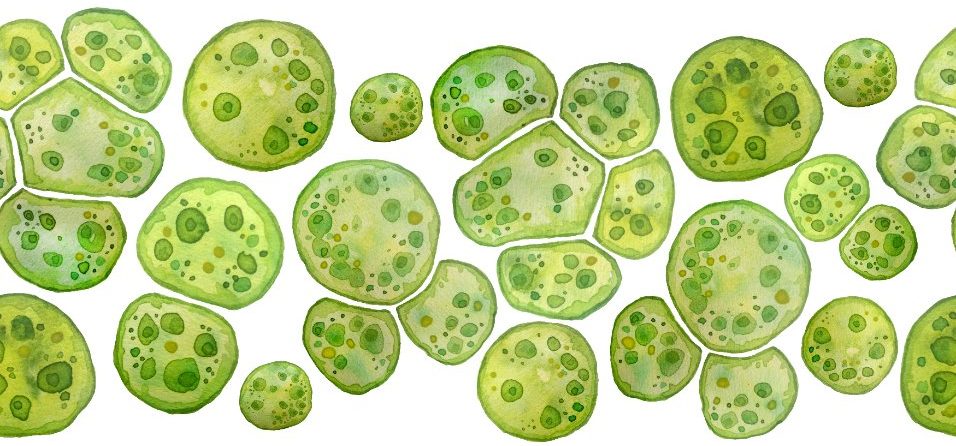Fat Away from the Land: 3rd Generation Biodiesel
The energy dense, relatively long chain alkane fuel that sends freight trucks on their long hauls is a simple molecule. So much so that it can be distilled out of petroleum, processed from palm oil or the fryers at burger king or, in the most advanced forms, made from microorganisms.
Chemical Reaction of Biodiesel
No matter what your source of starting fats, the creation of biodiesel from triglycerides (primary fat constituent) relies on the transesterification reaction. To recreate the alkanes gotten from petroleum the reaction changes out the organic group R″ of an ester with the organic group R′ of an alcohol and are often catalyzed by the addition of an acid or base catalyst. In the case of the production of biodiesel, the triglycerides in the oil are often catalyzed by a base, usually ethanol, and leave glycerol behind.
Microorganisms and Upstream Growth
This most advanced biodiesel (3rd generation) is being improved by biotechnologists researching the most oleaginous microorganisms and means to engineer them to be even easier to grow and with even more oil.
The lipids these organisms produce run the gamut of dietary supplements as well as biofuel precursors. In the case of making biodiesel; it is best to use saturated or monounsaturated lipids as opposed to polyunsaturated as these are more valuable in nutraceuticals.
Even better, these microorganisms are able to grow at a density that plants and animals cannot and oftentimes without the need for light. As such, the problems of land and resource usage that are seen with first generation biofuels are heavily mitigated. While this style of biofuel production is not the means by which most biofuel comes to us now there are pilot and trial scale production plants in places like Porvoo, Finland to make microorganism based biofuel more market dominant.
To dive deeper into these microorganisms:
Microalgae
This category of oleaginous organisms can approach 70% lipid content on a weight to weight ratio under a high carbon to nitrogen ratio. Despite this advantage they do require sunlight or synthetic equivalent and need help in decomposing lignocellulosic biomass. Microalgae can use both inorganic and organic carbon sources through four different modes of cultivation: autotrophic, mixotrophic, heterotrophic and photoheterotrophic as well as produce nutraceuticals to pair with the biodiesel.
Fungi
Both filamentous fungi and yeasts can be used in lipid production and can partner with other microorganisms when breaking down lignocellulosic substrates like wood chips and grass. These organisms also have the advantage of being able to be cultivated on inexpensive feedstocks such as waste molasses, monosodium glutamate wastewater, sewage sludge, glycerol, and agricultural residues. The most prominent of these unicellular fungi are in the genera Candida, Rhodosporidium, Yarrowia, Cryptococcus, Rhodotorula, Lipomyces, and Trichosporon, while the filamentous fungi Aspergillus awamori has the highest lipid production at 2.27 g/L.
Bacteria
Bacteria can grow on versatile substrates but have the distinct disadvantage of not being able to decompose lignocellulosic compounds and either need to be paired with either fungi or microalgae or have curated feedstock.
Some important genera of oleaginous bacteria are Rhodococcus sp., Gordonia sp., Acinetobacter sp., and Arthrobacter species.

Downstream Processing of Microorganisms
The majority of lipids synthesized by oleaginous microorganisms are of 4 to 28 member, unbranched carbon chains and are pulled from cells in the following steps:
Biomass Harvesting
This process accounts for 20-30% of the total cost of producing these biofuels due to the energy intensity and initial cost of the machinery needed to perform this task at scale. Rather than simply breaking apart the cells; the cells must be broken without damage to the lipids within. Depending on the size of the cell and presence of a cell wall methods of harvesting can vary from microfiltration to centrifugation, flotation or flocculation.
Lipid Extraction
To pull the lipids from the unhelpful portion of the cell there are ultrasound, microwave, bead milling, and detergent-assisted extraction techniques. The two most common methods are called the Bligh & Dyer and Folch methods in which mixtures of chloroform and methanol (2:1 by volume) are used as solvents. This is intended to separate the non-desirable polar phospholipids from the nonpolar triglycerides that will go through transesterification.
Transesterification
This stage of the process makes up 30%–40% of the total downstream cost and while the most commonly used process is the chemical one indicated earlier in this paper; does have a green alternative. This alternative, enzymatic transesterification, also helps avoid soap formation but at an increased cost of treatment.
Purification
One of the most common methods for final purification is known as wet washing. This process removes the traces of soap, enzymes, metal ions, water and non-desirable lipids.
A lot of valid criticisms have been raised against first generation biodiesel production but unfortunately this earliest version of biodiesel has created the general image of biodiesel that we see in modern media. Rather than oil palm plantations and spoiled tropical forests the future of biodiesel lies in large scale biofoundaries and a new use for industrial waste water. This growing share of the biofuel industry is cause for hope.
©www.geneonline.com All rights reserved. Collaborate with us: service@geneonlineasia.com








